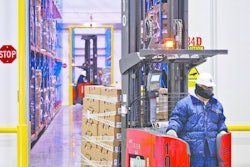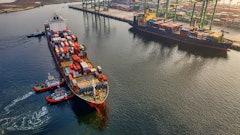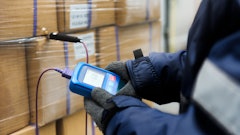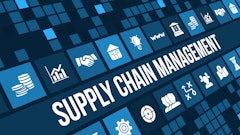The growing interconnectedness of our world enables a plethora of unique and beneficial use cases, from smart cities and autonomous vehicles to digital banking and biometric travel. But physical separation still presents a challenge for the logistics of trade. The relationship is clear: the more time a product spends in transit, the more likely its risk of being damaged—especially if the products are perishable or sensitive to external factors.
According to the Food and Agriculture Organization of the United Nations, 1.3 billion tons of food is wasted or lost globally each year, but the problem extends beyond just food. In 2014, the pharmaceutical industry had sales of over $1 trillion, with 20 percent of temperature-sensitive products—like medicines and vaccinations—becoming unusable due to logistics issues. Chemical products and electronics are also impacted throughout the supply chain by environmental elements such as temperature, humidity and light as well as shock, vibration and pressure.
Until recently, consistency could not be guaranteed throughout the shipping process. But by tracking—and, if necessary, continuously reporting on—these factors, companies can identify and correct issues in the shipping process, detect damage sooner and better assign liability for damage to transported goods.
The growing interconnectedness of our world enables a plethora of unique and beneficial use cases, from smart cities and autonomous vehicles to digital banking and biometric travel. But physical separation still presents a challenge for the logistics of trade. The relationship is clear: the more time a product spends in transit, the more likely its risk of being damaged—especially if the products are perishable or sensitive to external factors.
According to the Food and Agriculture Organization of the United Nations, 1.3 billion tons of food is wasted or lost globally each year, but the problem extends beyond just food. In 2014, the pharmaceutical industry had sales of over $1 trillion, with 20 percent of temperature-sensitive products—like medicines and vaccinations—becoming unusable due to logistics issues. Chemical products and electronics are also impacted throughout the supply chain by environmental elements such as temperature, humidity and light as well as shock, vibration and pressure.
Until recently, consistency could not be guaranteed throughout the shipping process. But by tracking—and, if necessary, continuously reporting on—these factors, companies can identify and correct issues in the shipping process, detect damage sooner and better assign liability for damage to transported goods.
Today, Internet of Things (IoT) cold chain technology makes it easy to do just that, ensuring that anything from insulin to deli meat remains at the optimum temperature throughout its entire product lifecycle. In this new controlled supply chain, sensors within the shipments can monitor temperature—along with humidity, jarring movements and UV exposure—and then relay this information in real time to remote monitoring applications. If shipping temperatures get too warm, corrective actions can be taken to cool things down and save the load—instead of being forced to dump spoiled products on arrival.
Historically, the only checkpoint to identify damaged products was done at the delivery point—either by taking samples or by analyzing data loggers, sensors and other indicators that were shipped with the goods.
Fortunately, cold chain technology has evolved with the supply chain complexities and now easily can be integrated into existing logistics solutions using wireless technology for continuous monitoring. The respective monitoring devices are connected to the core business processes utilizing wireless IoT modules for mobile communications using industry-standard protocols. Onboard data processing and machine learning can provide artificial intelligence inside these devices. Using cloud-based software not only makes the solution cost-effective, but it ensures that all the data transmitted from the sensors can be recorded and traced with a verifiable audit trail.
With two-way communication enabled by machine-to-machine (M2M) modules, systems can automatically sense critical situations and send commands back to the container’s temperature system to make adjustments. Real-time monitoring combined with location tracking enables supervisors to proactively re-route cargo to the nearest icing station to save goods before spoilage occurs or to fulfill emergency customer requests. Connected logistics systems can even order replacement shipments when goods can’t be salvaged, which reduces distribution delays, and can communicate with customers to alert when shipments may be delayed.
When producers can prove their products have stayed at the optimal temperatures, they not only avoid lost revenue due to less waste, they can even charge a premium. But beyond increased profits, companies have regulations and insurance to think about, especially when it comes to pharmaceutical and food products. Government agencies around the world are consistently increasing scrutiny of distribution practices as well as manufacturing conditions. Companies have more leverage to negotiate better insurance premiums and co-pays when they have an established record of delivering products within required temperature ranges.
With cold chain technology, producing companies and their chosen fleet management system have total control of designing analytics and reporting capabilities to meet their specific compliance requirements. Precise analytics help assess the quality of distribution processes and equipment so that prudent adjustments can be made to continually improve outcomes.
As more products with higher values travel farther distances, producers, shippers and consumers all stand to benefit from connected technology that ensures quality is maintained throughout the trip from factory to table.






















